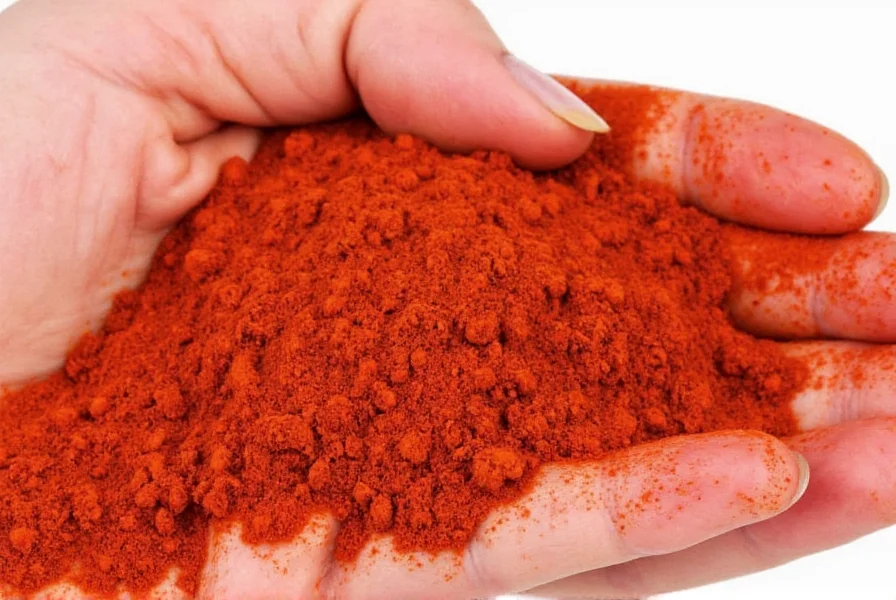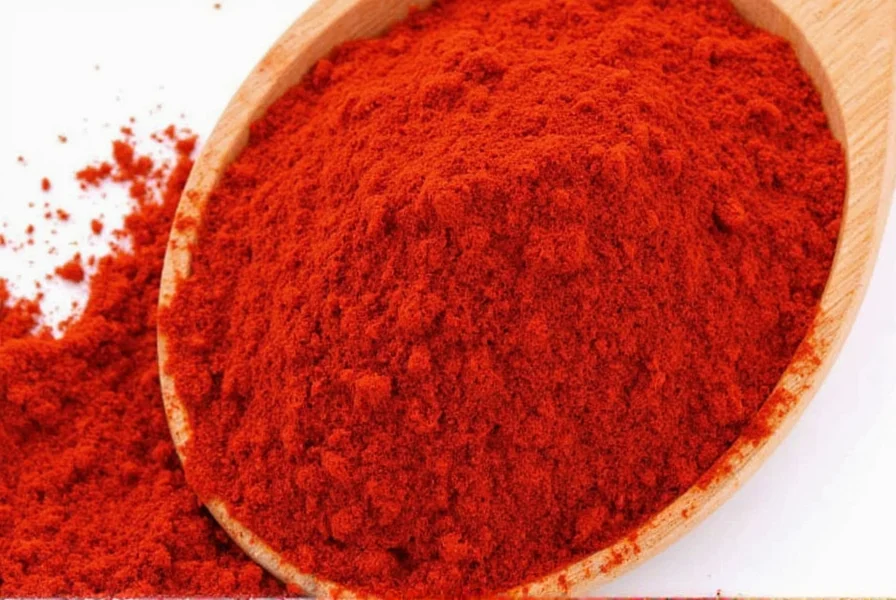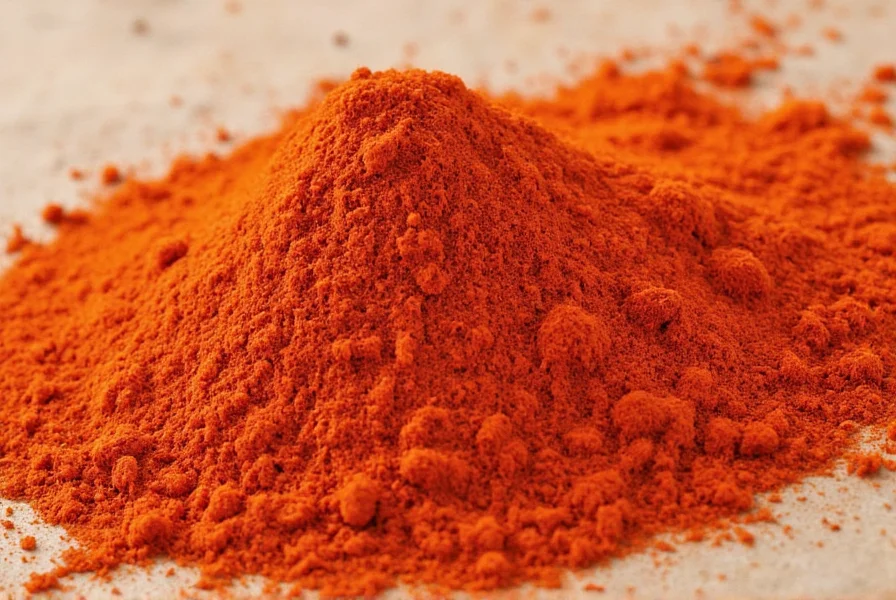Understanding what paprika is made from begins with recognizing its simple yet precise production process. Unlike many spice blends, authentic paprika contains only one ingredient: dried and ground peppers. The specific variety of pepper determines whether the final product will be sweet, hot, or smoked in flavor profile. This pure form of paprika has been produced for centuries, particularly in regions like Hungary and Spain where ideal growing conditions yield peppers with exceptional color and flavor.
The Peppers Behind Paprika Production
While many assume paprika comes from generic "red peppers," it actually derives from specific cultivars of Capsicum annuum selected for their color intensity, flavor profile, and drying characteristics. The most common varieties include:
- Kalocsai - Hungarian variety known for deep color and mild flavor
- Csemege - Another Hungarian type with slightly sweeter notes
- Bola - Larger pepper yielding bright red paprika
- Ãnón - Spanish variety used for smoked paprika (pimentón)
These peppers are allowed to fully ripen on the vine until they reach their characteristic deep red color, which indicates peak carotenoid development. Carotenoids are the natural pigments responsible for paprika's vibrant hue and many of its health benefits.

Paprika Production Process Explained
The transformation from fresh pepper to paprika powder follows a precise sequence that preserves both color and flavor compounds:
- Harvesting - Peppers are picked at full ripeness when color and flavor compounds are most concentrated
- Cleaning - Thorough washing removes any dirt or debris
- Drying - The critical step that determines final flavor profile:
- Sweet paprika: Air-dried at moderate temperatures (40-60°C/104-140°F)
- Smoked paprika: Dried over oak wood fires for 10-15 days
- Hot paprika: Often sun-dried to intensify capsaicin concentration
- Stemming and Seeding - Removal of stems, seeds, and white membranes which can impart bitterness
- Grinding - Stone grinding preserves flavor compounds better than high-speed mills
- Sieving - Ensures consistent powder texture
- Packaging - Stored in light-proof containers to prevent color degradation
The drying temperature significantly impacts the final product. Higher temperatures during drying can degrade capsaicin (the compound responsible for heat) while preserving color. This explains why some hot paprika varieties actually have less intense heat than expected despite their vibrant color.
| Type of Paprika | Pepper Variety | Drying Method | Heat Level (Scoville) | Primary Flavor Notes |
|---|---|---|---|---|
| Hungarian Sweet | Kalocsai, Csemege | Air-dried | 0-500 SHU | Earthy, sweet, bell pepper |
| Spanish Smoked | Ãnón, Jaranda | Smoked over oak | 100-500 SHU | Woody, smoky, complex |
| Hungarian Hot | Eszterházy | Sun-dried | 5,000-10,000 SHU | Sharp, pungent, spicy |
| Sweet Hungarian Ground | Bola | Air-dried | 0-100 SHU | Mild, sweet, vibrant color |
Common Misconceptions About Paprika Ingredients
Many people wonder what is paprika made out of beyond just peppers. Authentic paprika contains no additives, but several misconceptions persist:
- "Paprika is just ground red bell peppers" - While bell peppers are Capsicum annuum, they lack the concentrated color compounds of paprika-specific varieties
- "All paprika is spicy" - Most traditional Hungarian paprika is actually sweet, with heat levels varying by type
- "Paprika contains other spices" - Pure paprika has only one ingredient, though some commercial blends may add fillers
- "It's the same as chili powder" - Chili powder typically contains multiple spices while paprika is single-ingredient
When shopping for authentic paprika, check the ingredient list. True paprika should list only "paprika" or "ground red peppers" without additional ingredients. Some premium varieties specify the pepper type and region of origin, which affects both flavor and color intensity.

Nutritional Profile and Quality Indicators
Beyond understanding how is paprika produced, consumers increasingly want to know about its nutritional value. Paprika's deep red color comes from carotenoids, particularly capsanthin and capsorubin, which offer antioxidant benefits. High-quality paprika should have:
- Bright, consistent red color (dull or brownish indicates poor quality or age)
- Fine, uniform texture without lumps
- Distinctive aroma appropriate to its type (sweet, smoky, or pungent)
- No musty or stale smell (indicates improper drying or storage)
The best paprika maintains its vibrant color for up to 6 months when stored properly in an airtight container away from light and heat. Over time, the color will fade as carotenoids degrade, though the spice remains safe to consume.
Using Authentic Paprika in Cooking
Knowing what paprika is made from helps home cooks select and use it properly. Different types serve distinct culinary purposes:
- Sweet paprika - Ideal for coloring dishes without adding heat (goulash, deviled eggs)
- Smoked paprika - Adds depth to paella, roasted vegetables, and barbecue rubs
- Hot paprika - Provides both color and heat to Hungarian dishes and spice blends
For maximum flavor impact, add paprika toward the end of cooking or use in finishing oils, as prolonged heat can diminish its delicate flavor compounds. Never cook paprika dry in a pan, as this causes bitterness.
Frequently Asked Questions About Paprika
Is paprika made from only one type of pepper?
No, paprika can be made from various cultivars of Capsicum annuum peppers. Different regions use specific varieties - Hungarian paprika typically comes from Kalocsai or Csemege peppers, while Spanish smoked paprika (pimentón) uses Ãnón or Jaranda peppers. The specific pepper variety determines whether the final product is sweet, hot, or smoked in flavor.
Does authentic paprika contain any additives or fillers?
Pure, high-quality paprika contains only ground dried peppers with no additives. Some commercial blends may include anti-caking agents like silicon dioxide or rice flour, but traditional paprika production uses only peppers. When checking what paprika is made from, look for products listing only "paprika" or "ground red peppers" in the ingredients.
How does the drying process affect paprika's flavor and color?
The drying method significantly impacts paprika's characteristics. Air-dried paprika (common for sweet varieties) preserves bright red color with mild flavor. Smoked paprika is dried over oak fires for 10-15 days, developing complex smoky notes. Sun-drying intensifies heat in hot paprika varieties by concentrating capsaicin. Temperature control during drying is crucial - too high can degrade flavor compounds while too low may lead to mold development.
Can I make paprika at home from regular bell peppers?
While you can dry and grind bell peppers, the result won't be authentic paprika. Bell peppers lack the concentrated carotenoids and specific flavor compounds of paprika-specific pepper varieties. Traditional paprika peppers have thinner walls and higher pigment concentration. For best results, use specific paprika pepper varieties like those grown in Hungary or Spain, which develop the characteristic deep red color and complex flavor profile when properly dried and ground.











 浙公网安备
33010002000092号
浙公网安备
33010002000092号 浙B2-20120091-4
浙B2-20120091-4